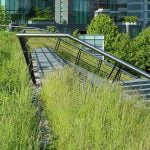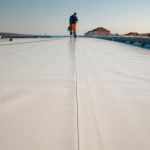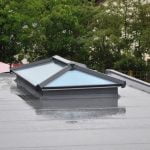
First, when it comes to pricing up a new roof, one of the main factors influencing the final cost is the material you choose. With most owners aiming for durability, affordability, and aesthetics, it’s important to weigh up the pros and cons of each material, exploring the benefits and understanding not just the initial costs but also the lifetime costs. Then, can you only decide what is best for your budget and long-term maintenance needs.
Roofing Material Costs, Considerations & Financial Choices
Tips from roofing experts

New roof costs vary on the size, complexity and type of material used
As roofing experts, we know that the cost of your project can vary depending on factors such as the roof’s size, the installation’s complexity, and, more importantly, the type of material you choose.
For example, asphalt or felt are often the cheapest roofing materials. While their price makes them attractive, the initial low cost comes with a trade-off in terms of longevity.
For example, the cost of asphalt roofs is mostly their only benefit. Disadvantages include a lack of energy efficiency and durability, with mildew as a common problem. As asphalt shingles are susceptible to weather damage, they require frequent repairs and replacements.
So, while some roofing materials products might seem the best economic decision upfront, the cumulative costs of replacements and maintenance certainly outweigh the initial affordability in the long run, proving that not all cheap roofing materials are suitable long-term investments.
There is one affordable and durable option…
On the other end of the spectrum is rubber roofing, which emerges as a cost-effective alternative that creates a great balance between affordability and durability.
EPDM roofing (ethylene propylene diene monomer) is a synthetic option that offers several advantages over traditional, pricier options, keeping new roof costs low.
Rubber roofs are inexpensive to install compared to other materials like metal or slate, often making them the number one option for budget-conscious homeowners. Plus, their low maintenance requirements contribute to further cost savings over time.
Rubber’s resilience means fewer repairs and replacements, significantly reducing long-term maintenance costs.
When you consider rubber’s durability, it’s a wiser investment for homeowners who want a roof to stand the test of time.
With a lifespan of 40 years or more, rubber roofs offer the best value for money for its upfront cost.


Calculate the cost of your roof
Discover how much it would cost to use rubber for your new roof:
- Enter your roof measurements
- Add the type of edge you have on each side
The most expensive roofing materials
Prices for roofing materials in the UK can depend on factors such as location, material availability, and the complexity of the installation.
However, we’ve included estimated prices for luxury roofing materials below as a general guide.
It’s important to note that these price ranges are estimates and might vary based on individual project requirements, labour costs for installation, and market conditions.
- Slate roofs can cost from £70 to £150 per square meter, which can account for the quality of slate, the size and thickness of tiles and the difficulty of installation.
- Copper roofing material is rarer and more expensive due to its limited availability. Prices typically range from £100 to £200 per square meter, depending on the quality and thickness of copper sheets.
- Clay or terracotta can range from £50 to £100 per square meter.
- Metal roofing materials like zinc, copper or stainless steel typically range from £60 to £150 per square meter.












